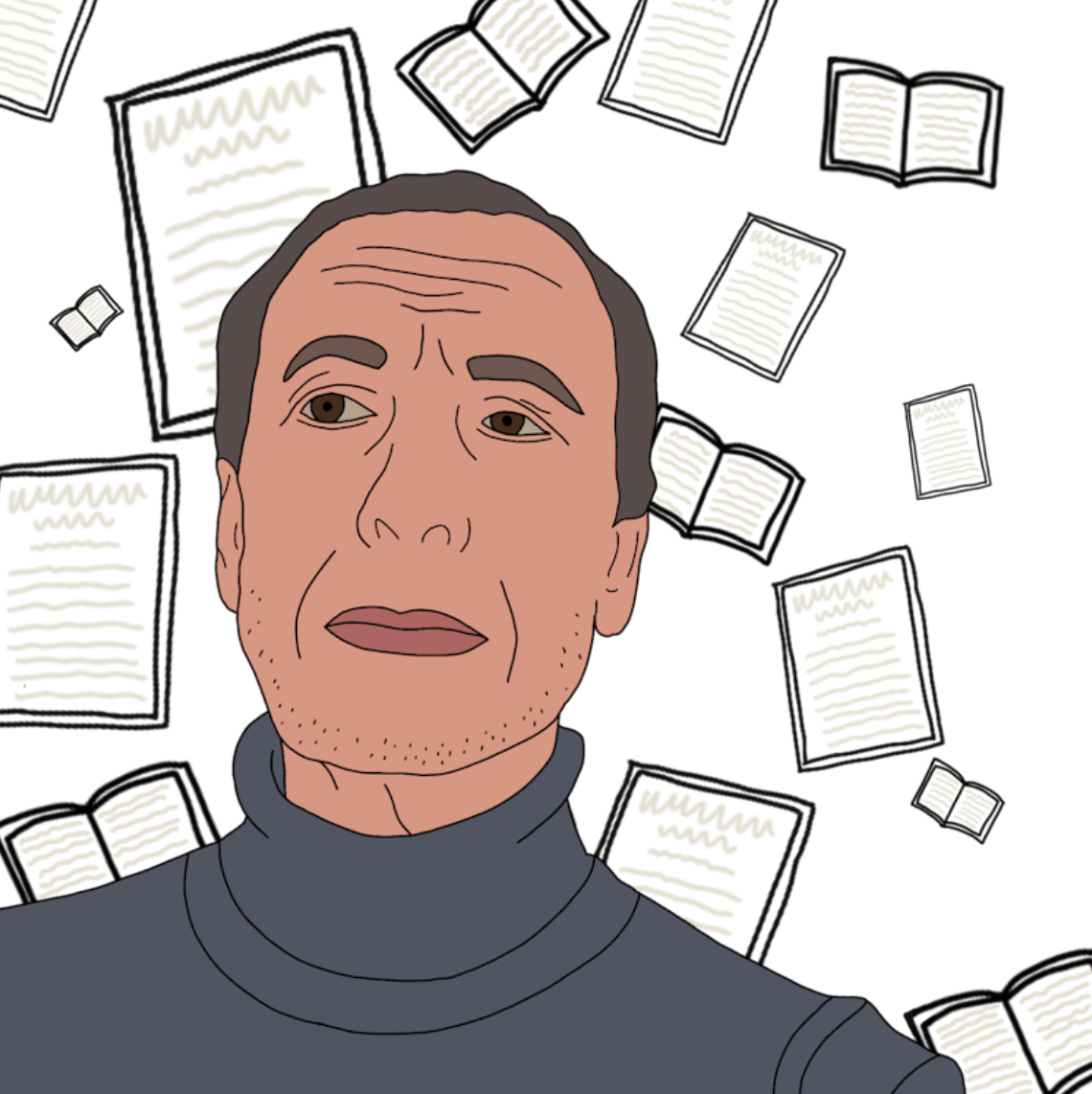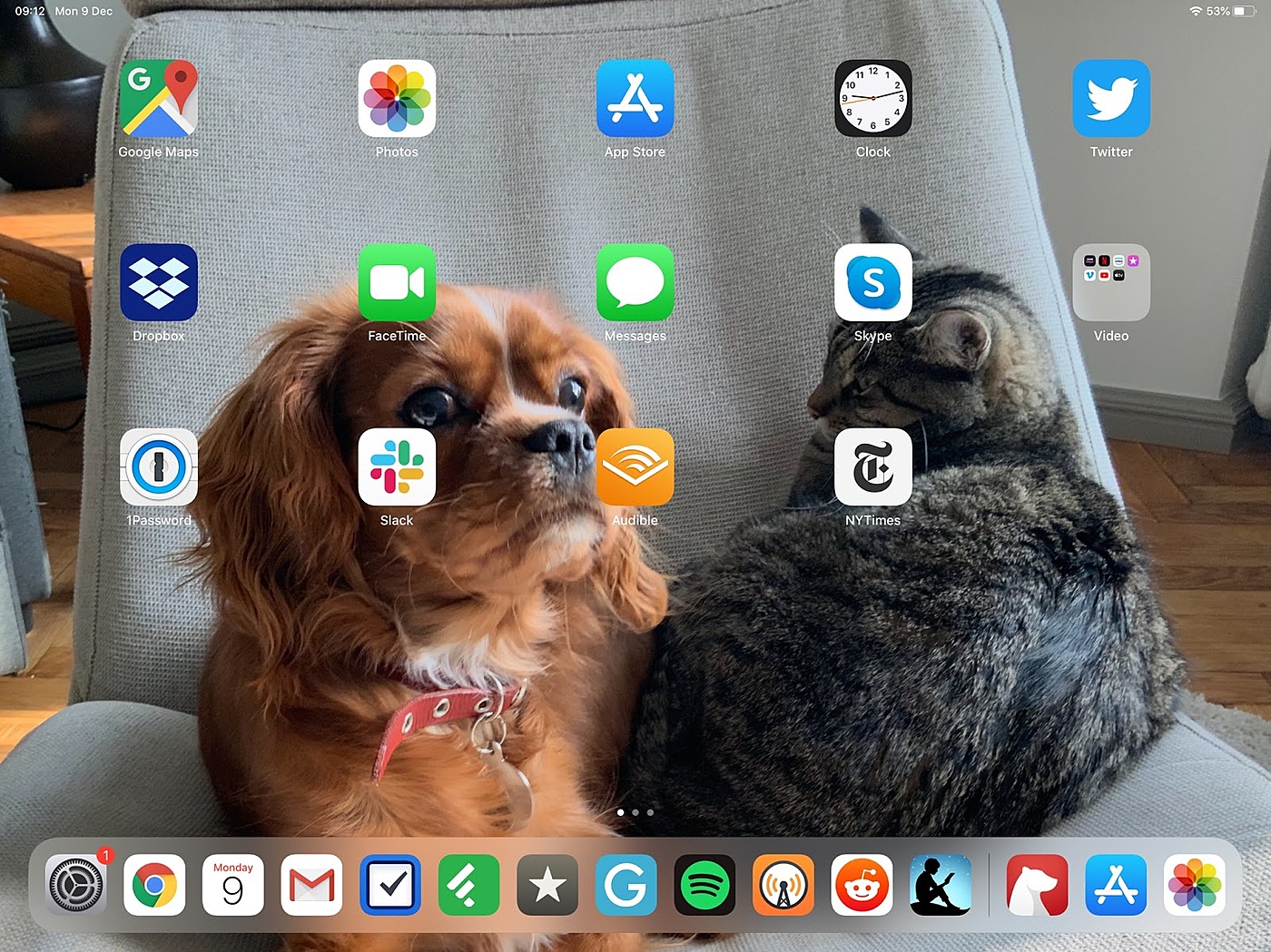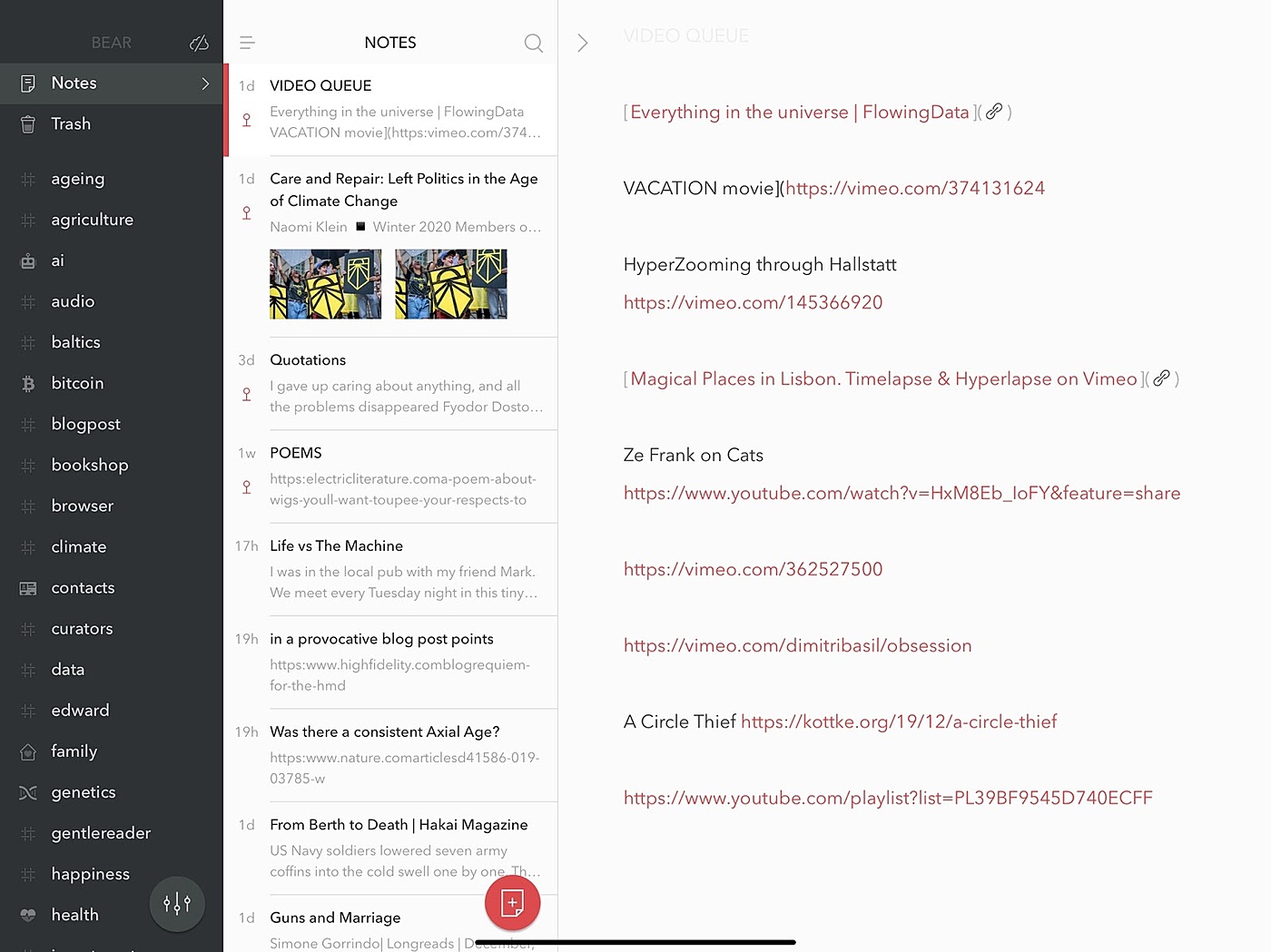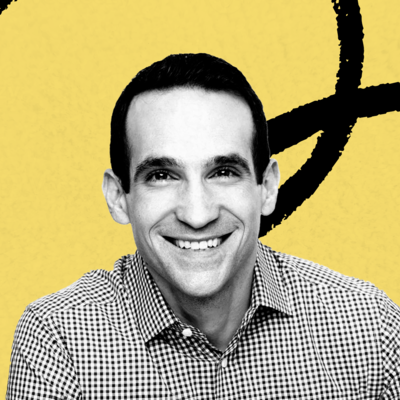
Robert Cottrell reads 1,000 articles a day.
But the verb ‘to read’ isn’t exactly right to describe what he does. Ingest is a little bit closer. But it doesn’t quite hit it on the nose, either. Ingestion implies that what he’s doing is a mechanical, rote activity.
No, Robert Cottrell eats articles. With gusto and verve.
He’s a former Moscow bureau chief for The Economist and the Financial Times. Now he spends most of his time writing The Browser, a daily newsletter where he shares five of the best articles of the day with his thousands of subscribers.
We’re sitting in my office in Chinatown and he’s swiping through a recent superorganizers interview. I’ve, somewhat nervously, told this master of manuscripts to read an article and tell me completely honestly what’s going through his head — in real-time.
We turn to my Tiago Forte profile from a few weeks ago. He tries and tastes, swipes and samples.
“At this point I’m wondering who Tiago Forte is?” he says. “That is the context I wanted up top, in order to interpret everything that follows.” I can almost see him rolling the article around in his mouth, taking flavor notes.
A little further down the article, “Well, I’ve already parted company with the narrator at the point where he discusses Evernote.” He’s got one long finger on his iPad, scrolling in rapid staccato bursts. “But he does use Things, which I use too. So I’m kind of for and against — I’m on his team, and I’m not.”
Then finally, the verdict: “I'm reading this with pleasure. You write well,” he says. I breathe a sigh of relief.
I passed the first test. But I’m left with a ton of lingering questions. How does he physically manage to read so much in a day? What makes an article high quality? What are his best sources for high quality reads?
We talk about all of this in more in today’s interview.
Let’s get into it!
Robert spends his life looking for great writing
I’m able to read a thousand pieces of journalism a day, which I think makes me the most read person in the world.
Not the best read, mind you, but the most read. I’ve taken account of somewhere between 3 and 5 million pieces of writing over the last 10 years.
So if there’s anybody out there who has read more than that I would like to meet them.
I’m limited by my physical capacity to read so many pieces a day, and so the trouble is optimizing my time so that not only do I follow the things that I know I like, but that I somehow manage to discover the things that I don’t know about.
What I'm trying to do is find pieces of writing each day which are of lasting value.
I want something that’s enjoyable to read in the moment, but will also be worth reading if it turns up in three, six or 12 months’ time.
Pieces with lasting value do three things: share really interesting ideas, deploy strong arguments, and have particularly fine writing — typically in first person.
By nature, a lot of breaking news pieces will not have lasting value.
He uses his iPad as his reading workhorse
The first thing I do when I get out of bed is read the New York Times — really for my own personal satisfaction. The morning is when I'm feeling fresh and the most receptive. That's when I feel good.
I do this on my iPad. The iPad is my workhorse.
I do an awful lot of my reading on public transport and the iPad allows me to continue to be productive. Half an hour on the tube can be some of my most productive time.
Once I’ve read the New York Times, then I’ll start in on looking at my Feedly with a heart full of hope.
Feedly aggregates 1000s of articles into one continuous stream
Feedly is an RSS reader for the iPad that aggregates all of the articles I want to read from publications I’ve selected. Currently, I’ve got about 700 RSS feeds in my Feedly — meaning it’s aggregating about 700 publications for me every day.
Quite a few of those are dead and don’t publish anymore, but there’s no downside to maintaining a publication in your feed that doesn’t post anything. The big concern for me, actually, are feeds that post too much.
If I know that a given publication produces a brilliant piece once or twice but they’re also posting 300 pieces of rubbish a day, it’s kind of difficult to want to continue subscribing.
Every day I just read through the river of articles that Feedly produces for me.
He’ll complement Feedly with other sources
Once I’ve gone through my main Feedly feed, I’ll switch to another one that strips articles from MetaFilter and Pinboard.
I follow quite a lot of people on Pinboard, and so between MetaFilter and Pinboard that adds about another 360 posts a day to the feed. These are slightly more random — they’re other people’s choices of articles — and so psychologically I like to keep them separate from my main feed.
I use Pinboard to help me keep from getting stale. The nice thing about it is that I can follow people that I think have the right sort of sensibility and they’ll save articles that often yield new stuff.
Hacker News, Reddit, and Substack are also sources I use quite a lot.
If a publication doesn’t have an RSS feed then I’ll subscribe to their newsletter. And if they don’t have a newsletter than I’ll bookmark them in Chrome.
I have about 100 Chrome bookmarks, and I try to visit at least 2 or 3 of them a day to make sure I’m not missing something. But even as I do that, I do it with a private irritation that they don’t have an RSS feed.
How he reads each article
As I’m going through my feed, I’m reading in almost a negative way.
I’m triaging. I’m skipping over stuff that I can see is breaking news or is yet another take on some existing controversy.
I put quite a lot of trust in headlines, oddly enough, because I figure that headlines are written by loyal allies of the writers who are paid to find and express what is best in the piece. So if the headline writer cannot produce a compelling headline then that is a very strong indicator that there’s not much good in the piece.
I can tell if something is good if it makes me say: “I hadn’t thought of that”, or, “That’s interesting”, or — and this is really important — “I like that writer.”
The more I read the more I become persuaded that the real guarantee of quality in a piece is that the person who’s written it is great. That may sound like a crazy obvious thing to say — but the whole message of the publishing industry is that the publication is the guarantee of quality.
I’d argue it differently. If I want to read Susan Orlean, I want to read her whether she’s publishing in the New Yorker or Harpers or the Financial Times or whatever.
So if I decide at first glance that this is something a little bit special, you know, and it’s not just another take on today’s news, then I’ll take it seriously and start to read it.
The best articles start well
Once I’ve read the headline, and I’m intrigued, I’ll start to read the piece.
At that point the article has to start well. If a piece does not start well then the chances are vanishingly small that it’s going to improve.
Now, this sounds like an absurdly reductivist way to approach reading. Who knows what hidden treasures I’m missing? And I’m sorry about that.
But the reality is that I have to allocate my time efficiently, and the greatest efficiency seems to be in assuming that someone who writes something is going to start off with the strongest point.
So if I’m hooked at the first paragraph then, chances are, I go on reading to the end.
I’m reading like this throughout the day. I’ll go through about 1,000 pieces this way.
At the end of the day only five articles make the cut
By the end of the day I’ll have read to the end, bookmarked, or saved, about 100 articles.
Once I’ve done that, I’ll go back and read all of those articles again and grade them to find the ones that I really feel strongly about.
The articles that I feel strongly about, I put into Bear.
I’m saving in Bear the stuff that I think is super good. Bear has a great plain-text reader, and so it makes it easy to read articles offline.
Bear is the last stage of my process. Towards the end of the day I might have eight or nine pieces in Bear in full text. And from those, I’ll select the five that go into the newsletter.
He composes and publishes the newsletter with Substack
Once I’ve narrowed it down to the five articles, I’ll switch to Substack to start composing the newsletter.
I’ll put in the titles, the links, and the lengths. Then I’ll reread the pieces again and write the summaries and the captions.
Substack provides everything we need to do this fairly easily.
And then the newsletter goes out, and the day is over.
Why he only publishes 5 articles a day out of a 1,000
We’ve decided that five pieces is the number we can reliably fill each day, with pieces that really excite us. If we were doing more than that we would risk getting a quota mentality.
With five that’s never the case — if I read all day there are always five pieces that make me excited enough to genuinely be able to say, “You should really read this piece.”
I really feel like I’ve got to be the kind of person that’s able to totally stand behind everything that I recommend.
Robert has built an AI to help him read even more articles
As I said before, I’m currently constrained by my physical capacity to read so many articles in a day.
Last year, I began working with a computer scientist named Jeremy Davies to build a machine learning algorithm to read articles for me.
Basically, what we’ve done is trained the algorithm on all of my past issues of The Browser. And we can set it to read thousands of posts that I don’t have time to read, and judge them.
This ML is essentially learning to be me. It’s basically an output from the virtual Robert Cottrell.
It’s still very early, but if we set it to read 1,000 articles it will return roughly 50 articles as being high quality. Of those, roughly half are going to be false positives and I'm going to look at them and think, “What's going on here?” The other half of them are going to be real. I'm going to say,“Yes — exactly, I can see why it has chosen this.”
When it becomes better trained and a little bit better overall (when it's finding three or four slam dunk pieces a day), I won’t have it fully substitute for me, but I'm going to use it to read more things. So, if I’m able to cope with a thousand feeds already, I can send the ML to go read 10,000 feeds.
It won't substitute my judgment, but it will make sure that I don't miss things.
It’s not finished yet, but we’ve built it into an app available on the app store called Gentle Reader.
Robert’s book recommendations
Robert’s podcast recommendations
- Anything by Tim Hartford
- An Arm and A Leg
- Almost anything from Pushkin
- The Cut
- Exchanges at Goldman Sachs
- The Ezra Klein Show
- Freakonomics
The Only Subscription
You Need to
Stay at the
Edge of AI
The essential toolkit for those shaping the future
"This might be the best value you
can get from an AI subscription."
- Jay S.
Join 100,000+ leaders, builders, and innovators

Email address
Already have an account? Sign in
What is included in a subscription?
Daily insights from AI pioneers + early access to powerful AI tools













Comments
Don't have an account? Sign up!
I'd like to know what his feedly looks like and favorite sites/writers